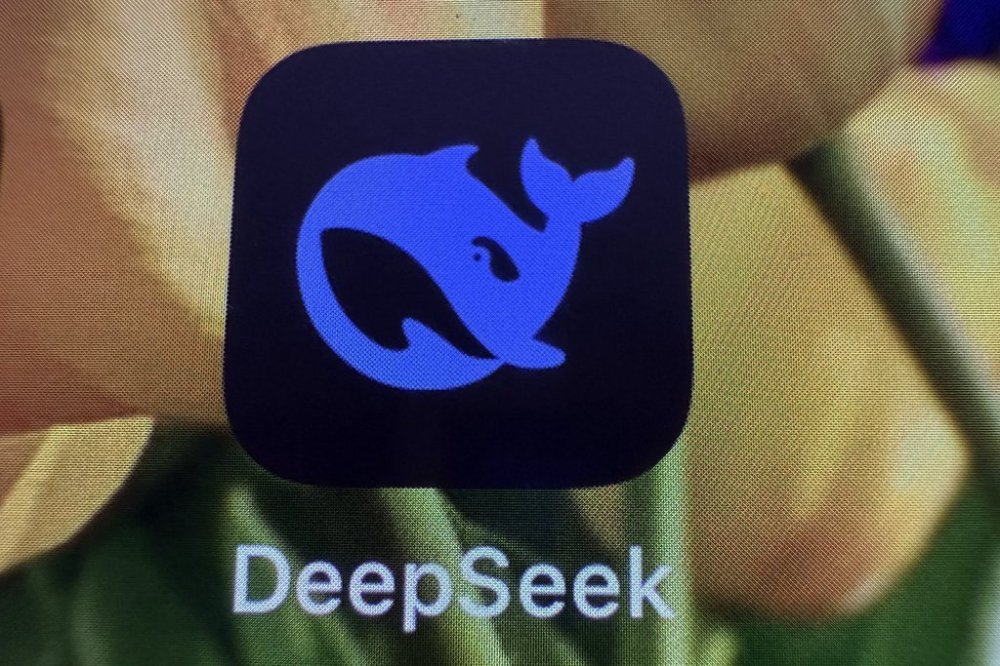DeepSeek has rattled the AI industry. Here’s a quick look at other Chinese AI models
Advertisement
Read this article for free:
or
Already have an account? Log in here »
To continue reading, please subscribe:
Monthly Digital Subscription
$0 for the first 4 weeks*
- Enjoy unlimited reading on winnipegfreepress.com
- Read the E-Edition, our digital replica newspaper
- Access News Break, our award-winning app
- Play interactive puzzles
*No charge for 4 weeks then price increases to the regular rate of $19.00 plus GST every four weeks. Offer available to new and qualified returning subscribers only. Cancel any time.
Monthly Digital Subscription
$4.75/week*
- Enjoy unlimited reading on winnipegfreepress.com
- Read the E-Edition, our digital replica newspaper
- Access News Break, our award-winning app
- Play interactive puzzles
*Billed as $19 plus GST every four weeks. Cancel any time.
To continue reading, please subscribe:
Add Free Press access to your Brandon Sun subscription for only an additional
$1 for the first 4 weeks*
*Your next subscription payment will increase by $1.00 and you will be charged $16.99 plus GST for four weeks. After four weeks, your payment will increase to $23.99 plus GST every four weeks.
Read unlimited articles for free today:
or
Already have an account? Log in here »
Hey there, time traveller!
This article was published 28/01/2025 (311 days ago), so information in it may no longer be current.
HONG KONG (AP) — The Chinese artificial intelligence firm DeepSeek has rattled markets with claims that its latest AI model, R1, performs on a par with those of OpenAI, despite using less advanced computer chips and consuming less energy.
DeepSeek’s emergence has raised concerns that China may have overtaken the U.S. in the artificial intelligence race despite restrictions on its access to the most advanced chips. It’s just one of many Chinese companies working on AI to make China the world leader in the field by 2030 and best the U.S. in the battle for technological supremacy.
Like the U.S., China is investing billions into artificial intelligence. Last week, it created a 60 billion yuan ($8.2 billion) AI investment fund, days after the U.S. imposed fresh chip export restrictions.

Beijing has also invested heavily in the semiconductor industry to build its capacity to make advanced computer chips, working to overcome limits on its access to those of industry leaders. Companies are offering talent programs and subsidies, and there are plans to open AI academies and introduce AI education into primary and secondary school curriculums.
China has established regulations governing AI, addressing safety, privacy and ethics. Its ruling Communist Party also controls the kinds of topics the AI models can tackle: DeepSeek shapes its responses to fit those limits.
Here’s an overview of some other leading AI models in China:
Alibaba Cloud’s Qwen-2.5-1M
Alibaba Cloud’s Qwen-2.5-1M is the e-commerce giant’s open-source AI series. It contains large language models that can easily handle extremely long questions, and engage in longer and deeper conversations. Its ability to understand complex tasks such as reasoning, dialogues and comprehending code is improving.
Like its rivals, Alibaba Cloud has a chatbot released for public use called Qwen — also known as Tongyi Qianwen in China. Alibaba Cloud’s suite of AI models, such as the Qwen2.5 series, has mostly been deployed for developers and business customers, such as automakers, banks, video game creators and retailers, as part of product development and shaping customer experiences.
Baidu’s Ernie Bot
Ernie Bot, developed by Baidu, China’s dominant search engine, was the first AI chatbot made publicly available in China. Baidu said it released the model publicly to collect massive real-world human feedback to build its capacity.
Ernie Bot has 340 million users as of November 2024. Similar to OpenAI’s ChatGPT, users of Ernie Bot can ask it questions and have it generate images based on text prompts. Ernie Bot is based on its Ernie 4.0 large language model.
Baidu claimed that Ernie 4.0 rivaled ChatGPT-4 during its release in Oct. 2023.
ByteDance’s Doubao 1.5 Pro
Doubao 1.5 Pro is an AI model released by TikTok’s parent company ByteDance last week. Doubao is currently one of the most popular AI chatbots in China, with 60 million monthly active users.
ByteDance says the Doubao 1.5 Pro is better than ChatGPT-4o at retaining knowledge, coding, reasoning, and Chinese language processing. According to ByteDance, the model is also cost-efficient and requires lower hardware costs compared to other large language models because Doubao uses a highly optimized architecture that balances performance with reduced computational demands.
Moonshot AI’s Kimi k1.5
Moonshot AI is a Beijing-based startup valued at over $3 billion after its latest fundraising round. It says its recently released Kimi k1.5 matches or outperforms the OpenAI o1 model, which is designed to spend more time thinking before it responds and can solve harder and more complex problems. Moonshot claims that Kimi outperforms OpenAI o1 in mathematics, coding, and the ability to comprehend both text and visual inputs such as photos and video.



